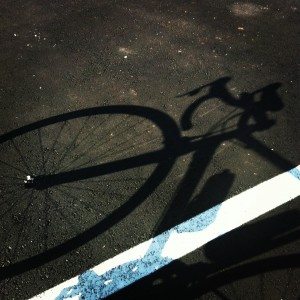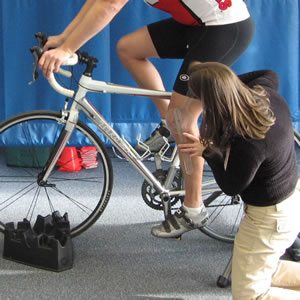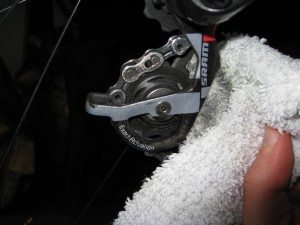 With the arrival of daylight savings time, sunshine and warmth comes the itch to get on the bike and get outside again. You see, many cyclists spend the winter taking a break from their bikes; snowshoeing, hiking, skiing, and the dreaded gym often take up many dreary winter hours, keeping us fit and strong, ready to ride again in the spring.
With the arrival of daylight savings time, sunshine and warmth comes the itch to get on the bike and get outside again. You see, many cyclists spend the winter taking a break from their bikes; snowshoeing, hiking, skiing, and the dreaded gym often take up many dreary winter hours, keeping us fit and strong, ready to ride again in the spring.
But not so fast, and especially not if you're only a beginner (someone who's only been riding for 3 years or less.) There are a few things you'll want to keep in mind as you begin to dust off your bike and head back out on the open road (or trail, if that's the case.) After the jump, you'll learn just what you should be doing to get yourself moving safely and effectively after a winter layoff.

Get A Bike Fit
If you haven't been fitted to your bike for a few years, you may want to consider consulting a fitter for a thorough session to iron out any fit issues. Over the winter, your body may have changed; you may be stronger, more flexible or have better endurance. Conversely, you may have developed overuse injuries, muscle imbalances or other issues that a good fit may help to alleviate before they've started.
Your cycling goals may also have changed over the winter. Perhaps you're going to start training for a Gran Fondo or to start doing some racing. If that's the case, your position may be in need of an overhaul to facilitate those training goals.
Finally, it goes without saying: if you've NEVER been fit to your bike, what are you waiting for? People have been known to gain as much as 5-10% more power just from being fit: comfort means you're stronger and faster, after all.
Tune Up Your Bike
You can always have a bike shop do this, but I personally find mechanic work to give me a much more intimate understanding of how my bike works. In any case, a full on tune up should include:
 Wipe down and clean all the nooks and crannies in the frame to remove salt, grime, grease and dirt.
Wipe down and clean all the nooks and crannies in the frame to remove salt, grime, grease and dirt.- Clean (and if necessary, replace) all bearings: hubs, headset, bottom bracket.
- Check tires for wear, true the wheels.
- Clean, lube and adjust the drivetrain (deralleurs.) Check the chainrings, cogs and chain for wear. Replace if necessary. Replace cables and housing. Don't argue with me, just do it.
- Clean and lube brake calipers. Replace pads if necessary.
Start Slow
If you took the winter off, you're likely not used to pedaling right off the bat. If you're a relative beginner, you'll definitely need to take it easy when you hop back on the bike. Start by doing some light workouts: easy spinning, small gears, flatter terrain. Don't head for the hills right off the bat. Work on your cadence and efficiency before you add a lot of intensity or you may find yourself tired, injured and discouraged.
As you progress through the days and weeks, add some duration to your rides. You should shoot for an increase of around 10% in volume per week and about 15-25% increase in volume overall per month. For example, if you ride 15 miles on week one, on week two you should ride around 16.5 miles. On week three you should ride around 18.5 miles. On week four you should ride about 21 miles. An so on and so forth. This will keep you from building too fast and injuring yourself.
[pullquote]There's no point in riding flat, windy roads if you love climbing in the hills, so do what you love to add that intensity.[/pullquote]After you've spent some time getting used to turning the pedals again you can start adding some intensity. Keep in mind that it may be a month or more of easy riding, slowly building up the time and distance before you start to add intensity which can mean harder riding, climbing or group rides with friends. It all depends upon what your goals are and what excites you: there's no point in riding flat, windy roads if you love climbing in the hills, so do what you love to add that intensity.
Finally, you will need to take some time to reacquaint your rear end with your saddle. If you're not careful in breaking in your butt or if your fit is poor (see above) you risk saddle sores. And nothing spells misery like saddle sores.
Consider A Professional
If you have specific goals that you're hoping to reach (a century, a Gran Fondo, starting to race, whipping on the guys on the local group ride, etc) consider looking for a structured training plan or hiring a coach to help you get there. Most of us have trouble setting goals for out season and motivating ourselves as the season begins to wear on. Having a training plan or coach to be accountable to is a great motivating tool for most people.
So the only question left is:
“When does your season start?”